Et of Kazakhstan,
Naryn of Kyrgystan
Don't Call It Beshbarmak
About the term Beshbarmak
Nowadays, et and Naryn are referred to as Beshbarmak (бешбармақ) or Beshbarmak (бесбармақ) in restaurants, with Beshbarmak being the more common term. Before the Soviet annexation, the name Beshbarmak did not exist, and in Kazakhstan, it was simply called et (meaning “meat”). Some historians believe that the term Beshbarmak (meaning “five fingers”) was coined during the Russian colonial era, when Russians looked down upon the Kazakh nomads who ate with their hands. According to Kazakhstan’s historical text “ ҚАЗАҚТЫҢ ЭТНОГРАФИЯЛЫҚ КАТЕГОРИЯЛАР, ҰҒЫМДАР МЕН АТАУЛАРЫНЫҢ ДƏСТҮРЛI ЖҮЙЕСІ, 2-том “, it is clearly stated that “calling et ‘Beshbarmak (бешбармақ)’ is incorrect” (see p. 222). (The literature on Kyrgyzstan remains unverified.) Furthermore, the term Barmak is said to refer to “finger” in the singular form, and therefore, in Kazakh, Beshbarmak does not exactly translate to “five fingers” in the plural form (which is considered incorrect in Kazakh). Some argue that this supports the idea that it was a name given by non-Kazakh Russian speakers. According to cultural anthropologists and food culture researchers at Kazakhstan National University, the term Beshbarmak does not appear in historical Kazakh texts at all, where everything is listed as et, and historians are said to have a tendency to avoid the term Beshbarmak. The more traditional the family, the more they prefer to refer to it as et, and instead of saying, “Let’s eat Beshbarmak,” they would say, “Let’s eat et (meat).”
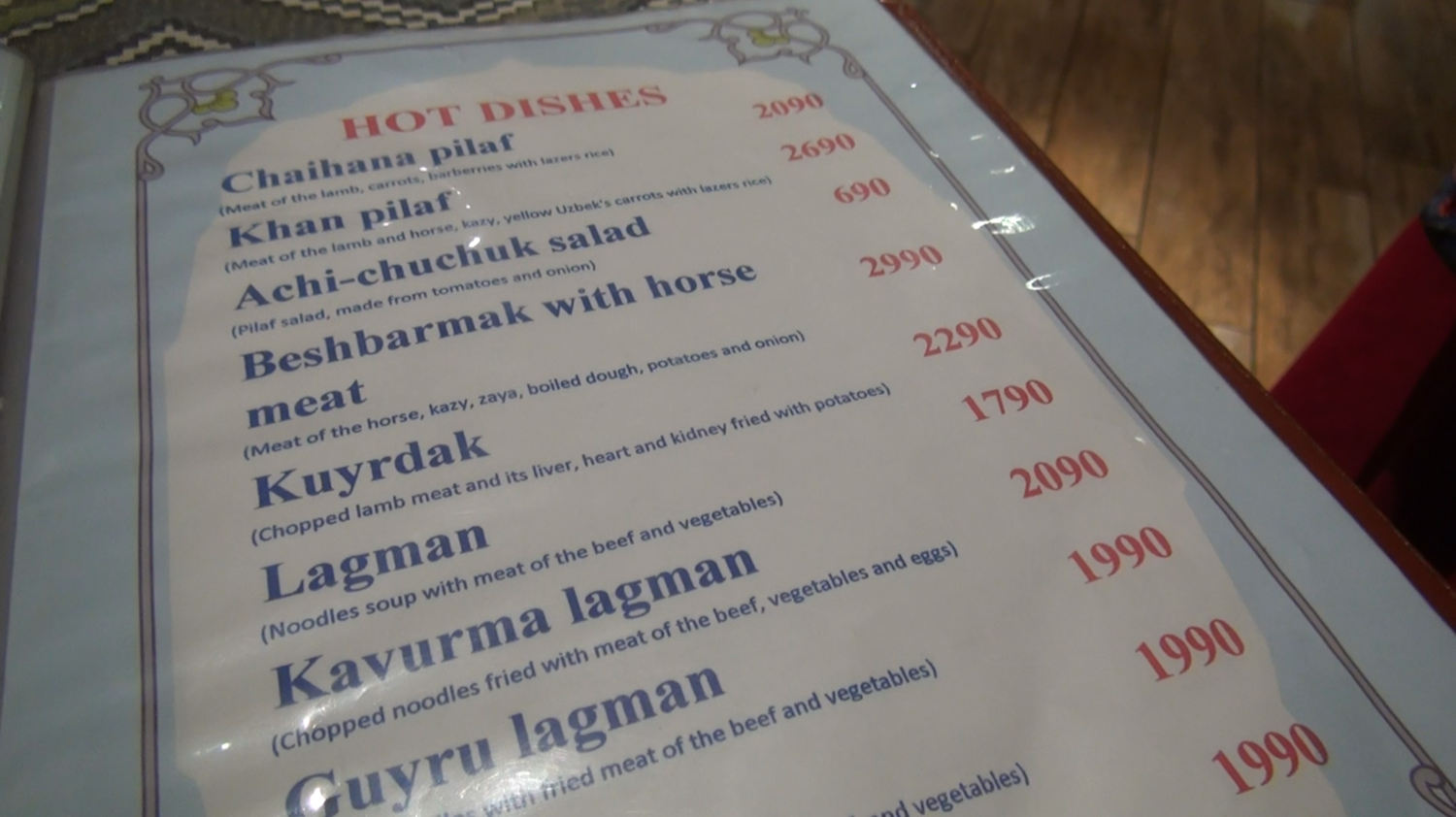
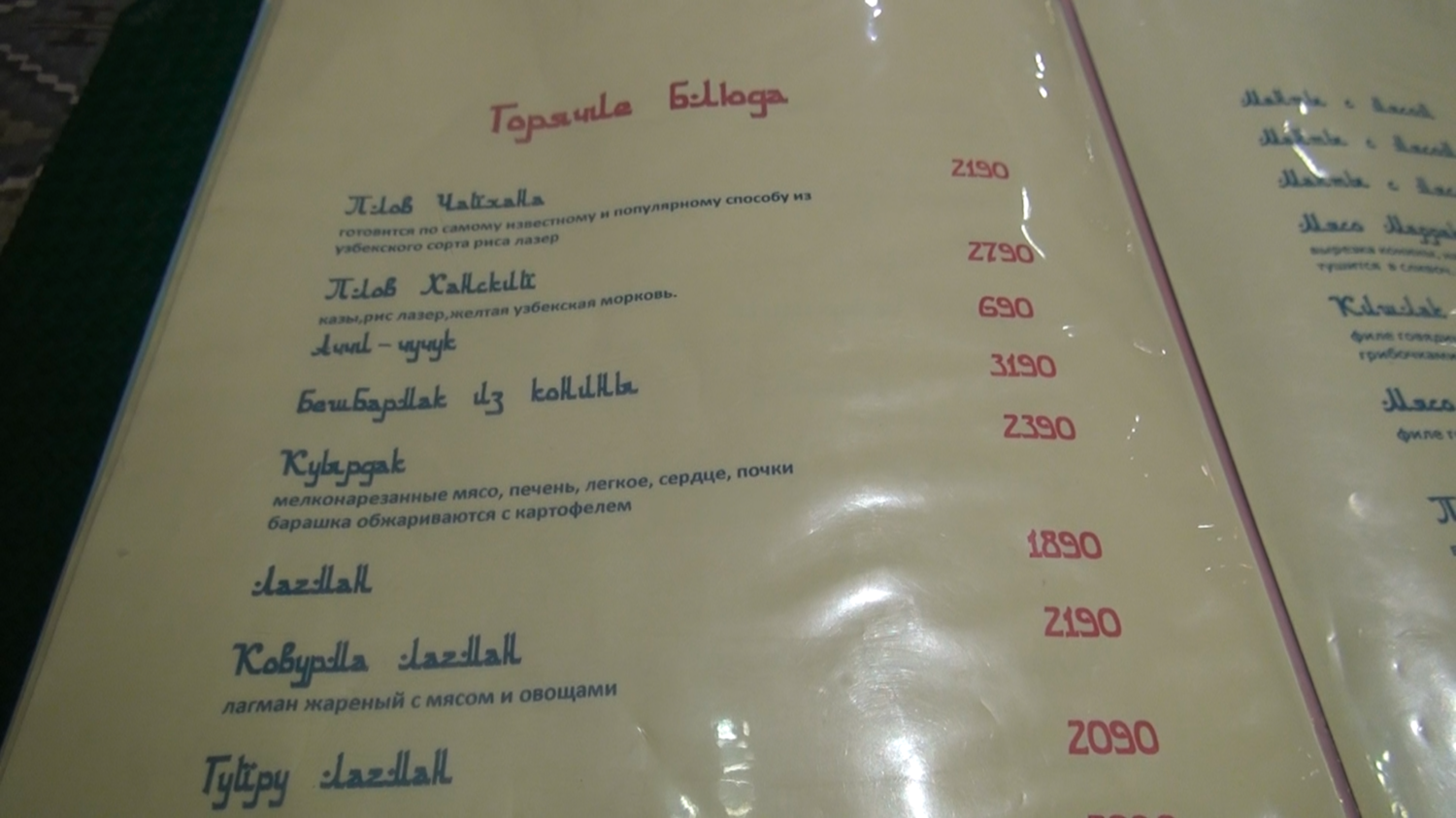
In Kyrgyzstan, it is also said that before the term Beshbarmak was used, the dish was called Naryn (нарын), a dish combining meat and thin noodles. However, there is a theory that Naryn and et might have originally been considered two distinct dishes. While the shapes of the noodles differ significantly, both dishes share the key elements of noodles and horse meat, and are traditionally prepared for celebrations. As a result, over time, these dishes may have gradually blended together, with no clear distinction remaining between them.
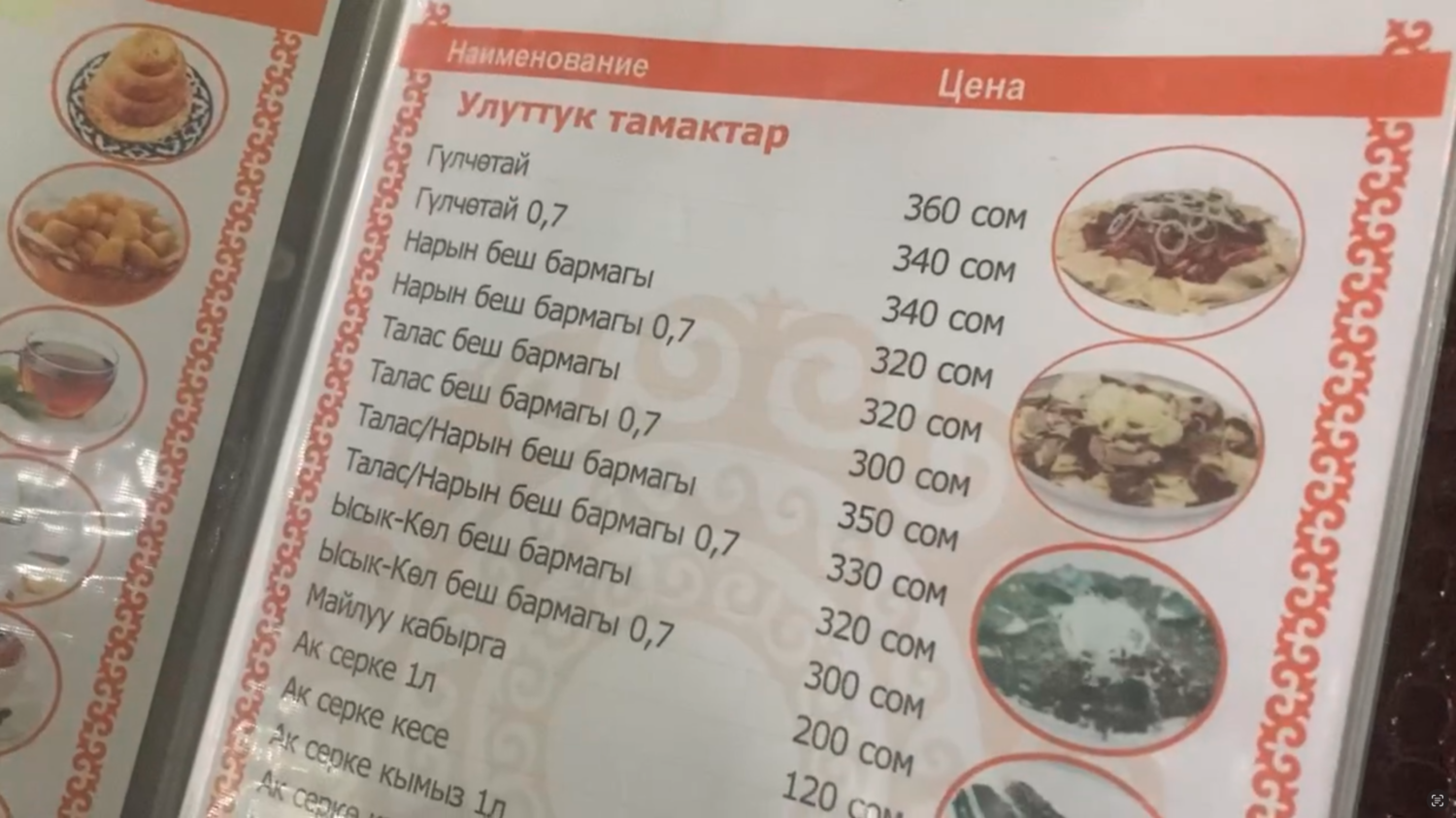
As mentioned above, the name Beshbarmak is the term commonly used in restaurants and is typically referred to as such in tourist guidebooks and when introduced in Japan. However, on this website, we would like to be mindful of the complex historical background and sentiments associated with this name, particularly regarding the Russian Empire and the Soviet era, which are deeply felt by the people of Kazakhstan. Therefore, we will use et as much as possible.
However, I surprisingly did not encounter people in Kyrgyzstan who disliked the term Beshbarmak. There seems to be a difference in perception between Kazakhstan and Kyrgyzstan, but I was unable to conduct research on this matter.
The Difference between the Noodles in Et and Naryn
As mentioned earlier, the noodles in Kazakhstan’s et and Kyrgyzstan’s Naryn are completely different in shape, but today both are grouped under the name Beshbarmak.
Kazakhstan’s et traditionally features large, flat noodles that are big enough to cover the upper body, and these noodles are cut into four large pieces and boiled. The traditional style involves scooping these massive noodles directly from a large plate with fingers and eating them by hand.
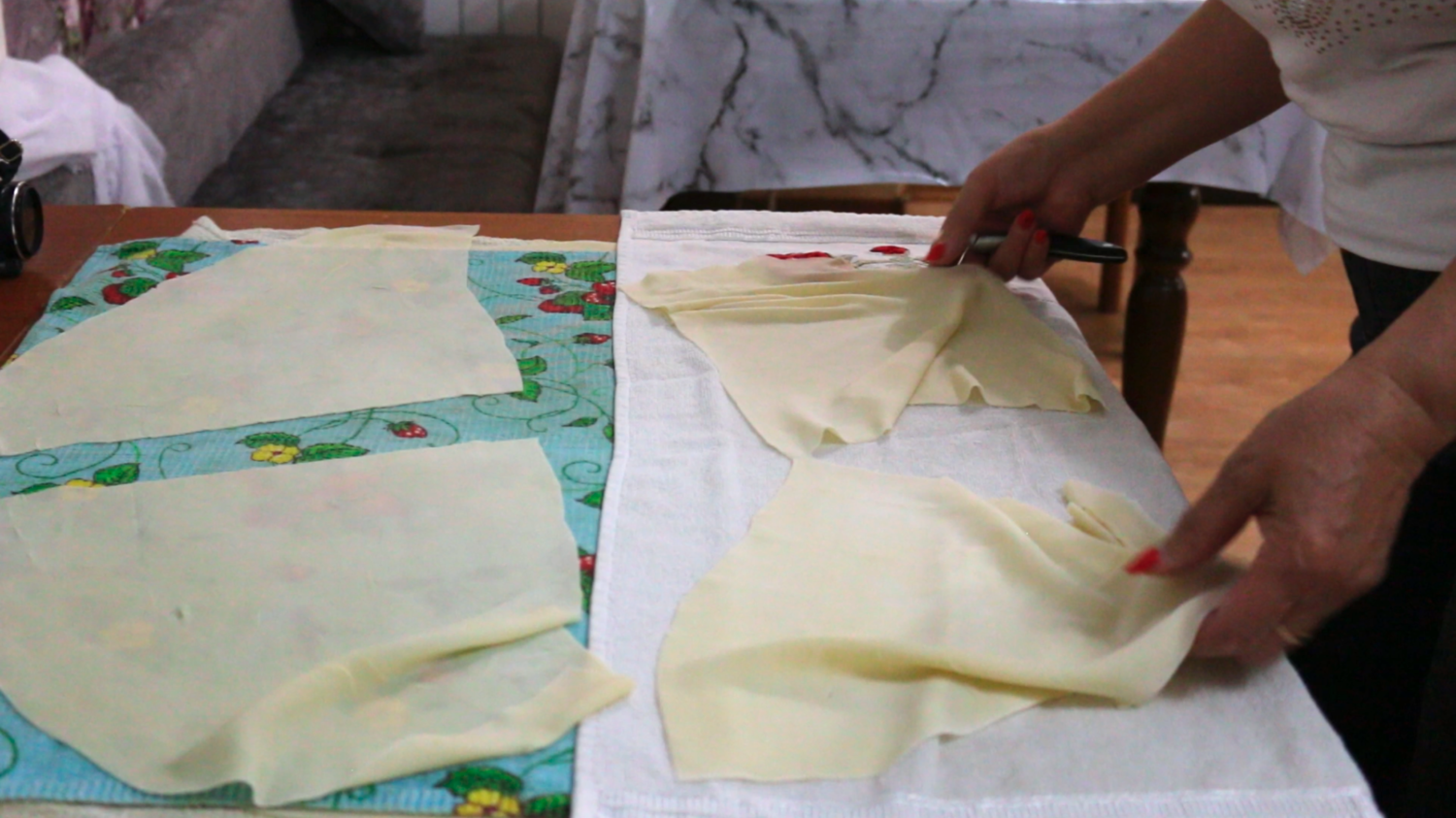
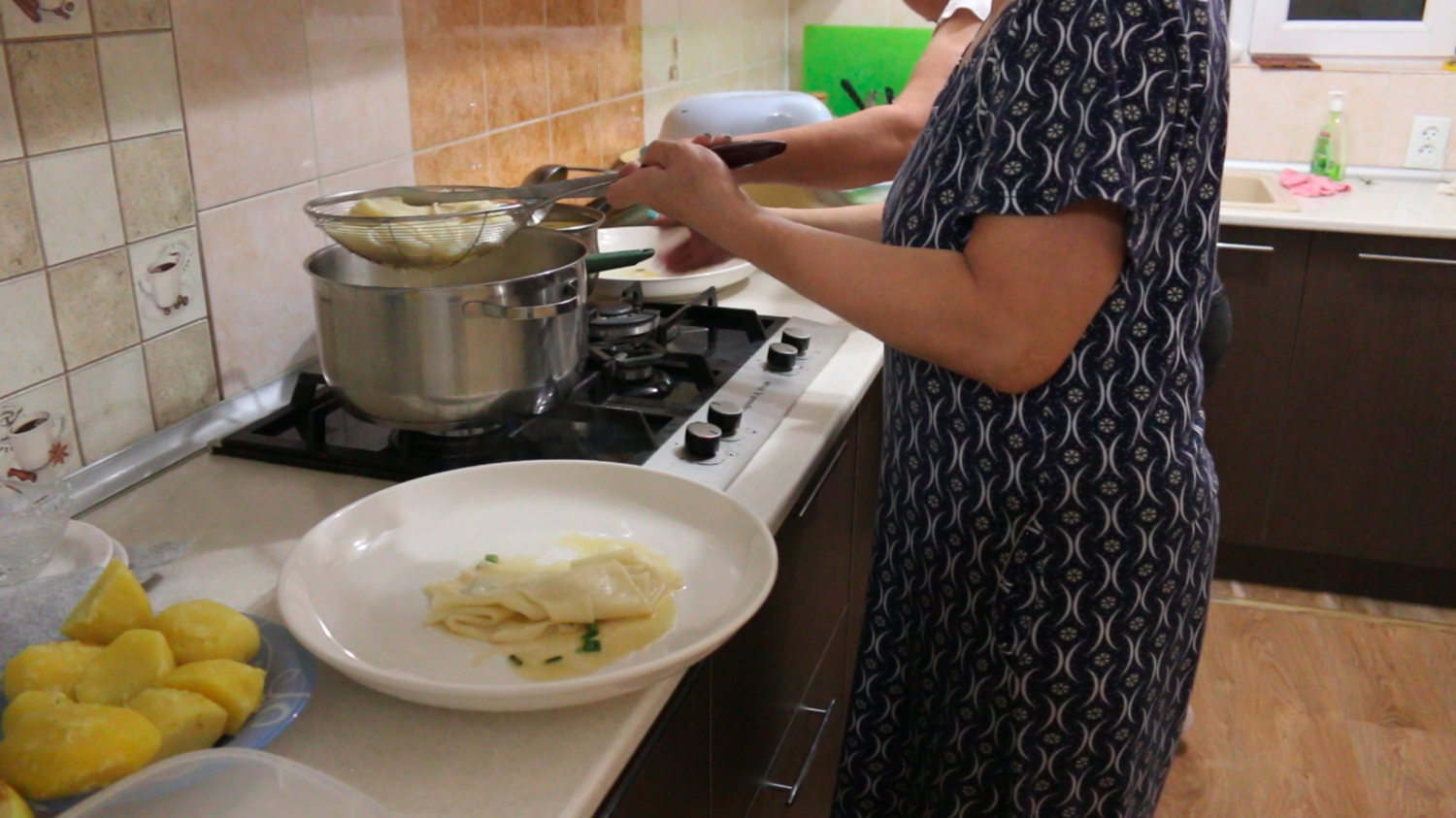
Recently, instant dried noodles for et are also sold in supermarkets. These noodles are cut into flat, square pieces about 5 to 10 cm in size and are packaged in bags.
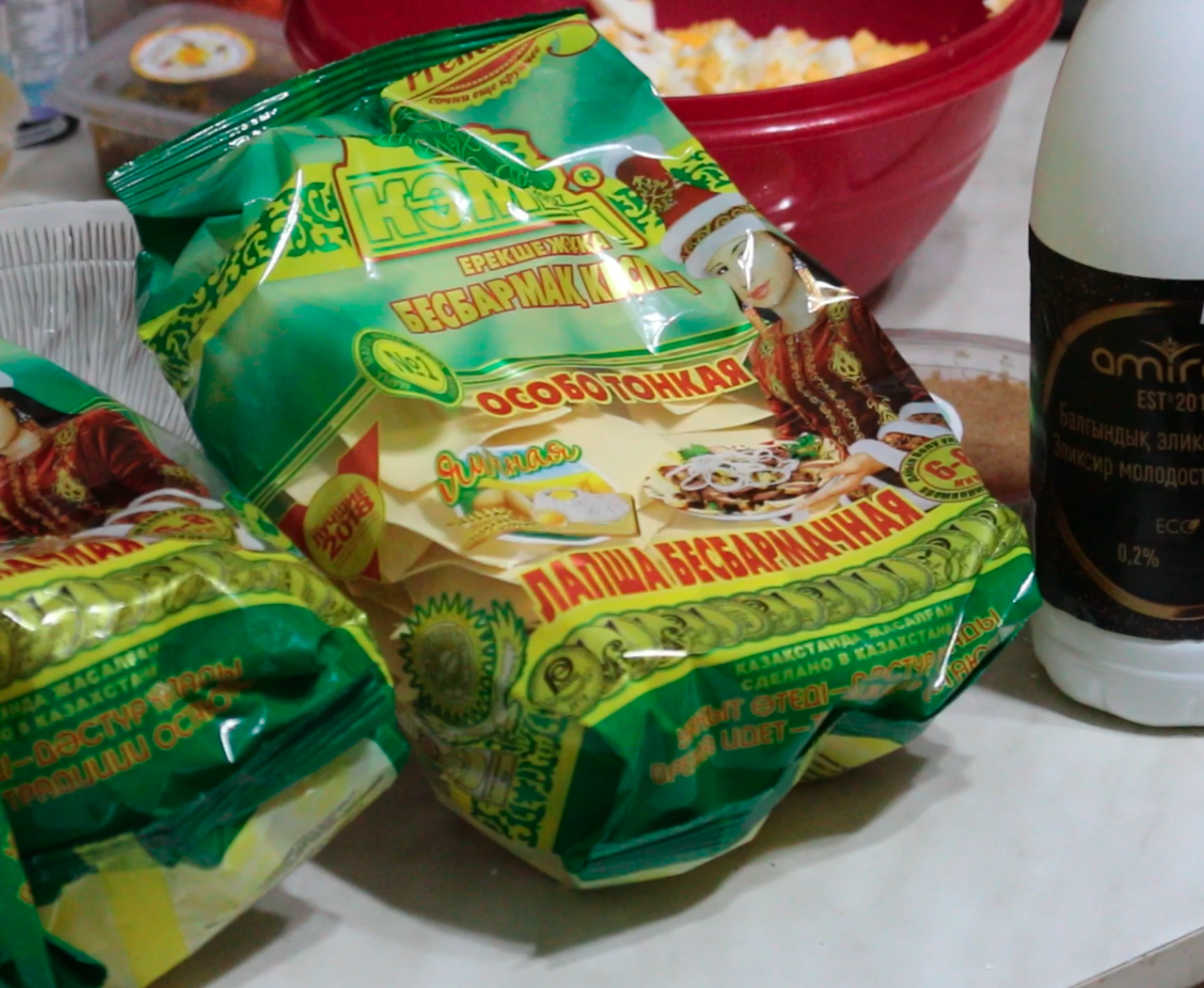
On the other hand, Kyrgyzstan’s Naryn features thin, string-like noodles. However, there are various types of noodles in terms of shape, ranging from short, cut noodles to curled noodles similar to instant ramen, and even straight noodles like pasta. During a recent party I attended at a household, straight dried noodles from the store were used, but the packaging did not mention Beshbarmak or Naryn, and the dish pictured on the package seemed to be different from Naryn. Since large quantities are typically made at once, it seems that families choose noodles that are easier to cook based on personal preferences.
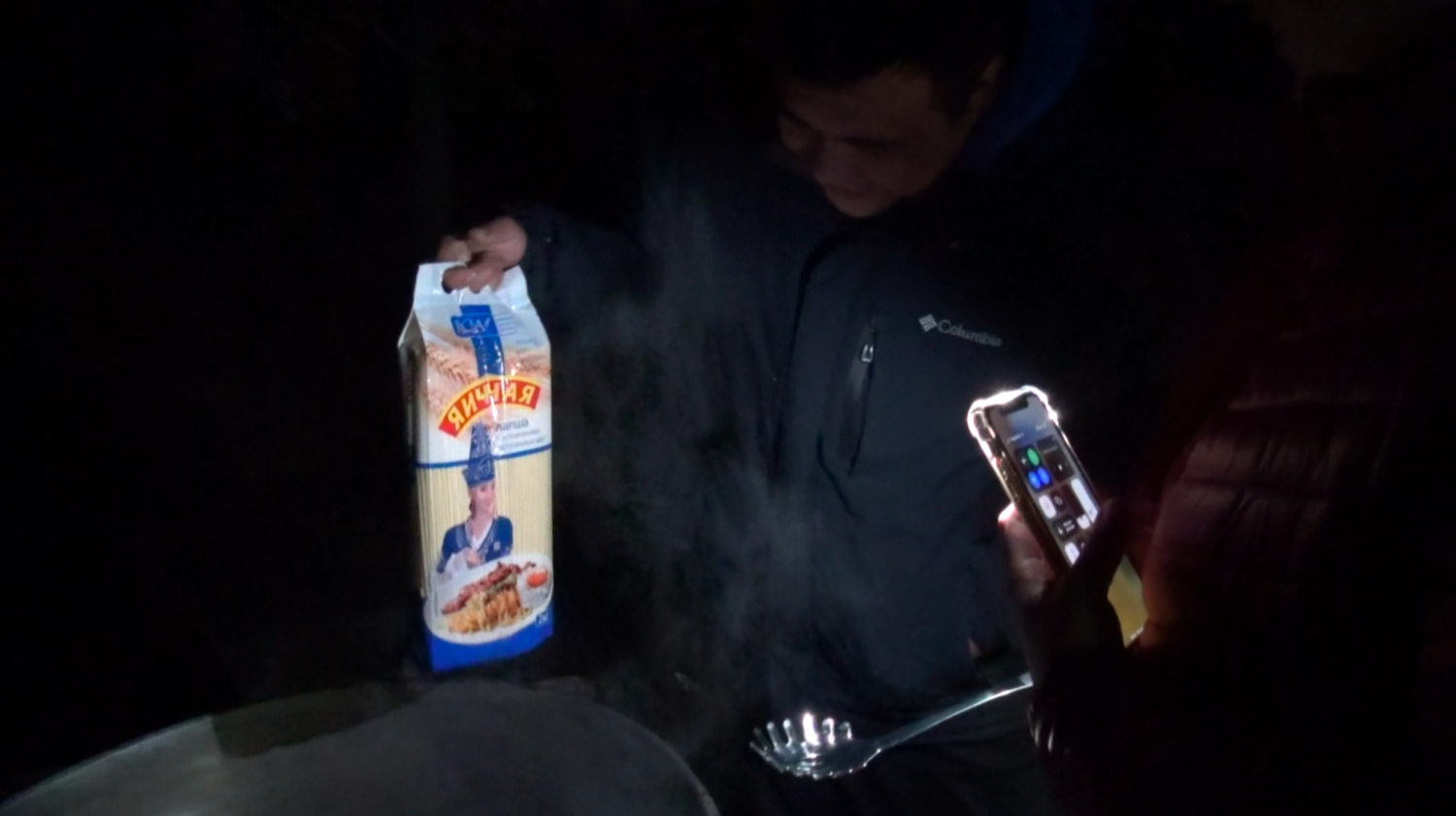
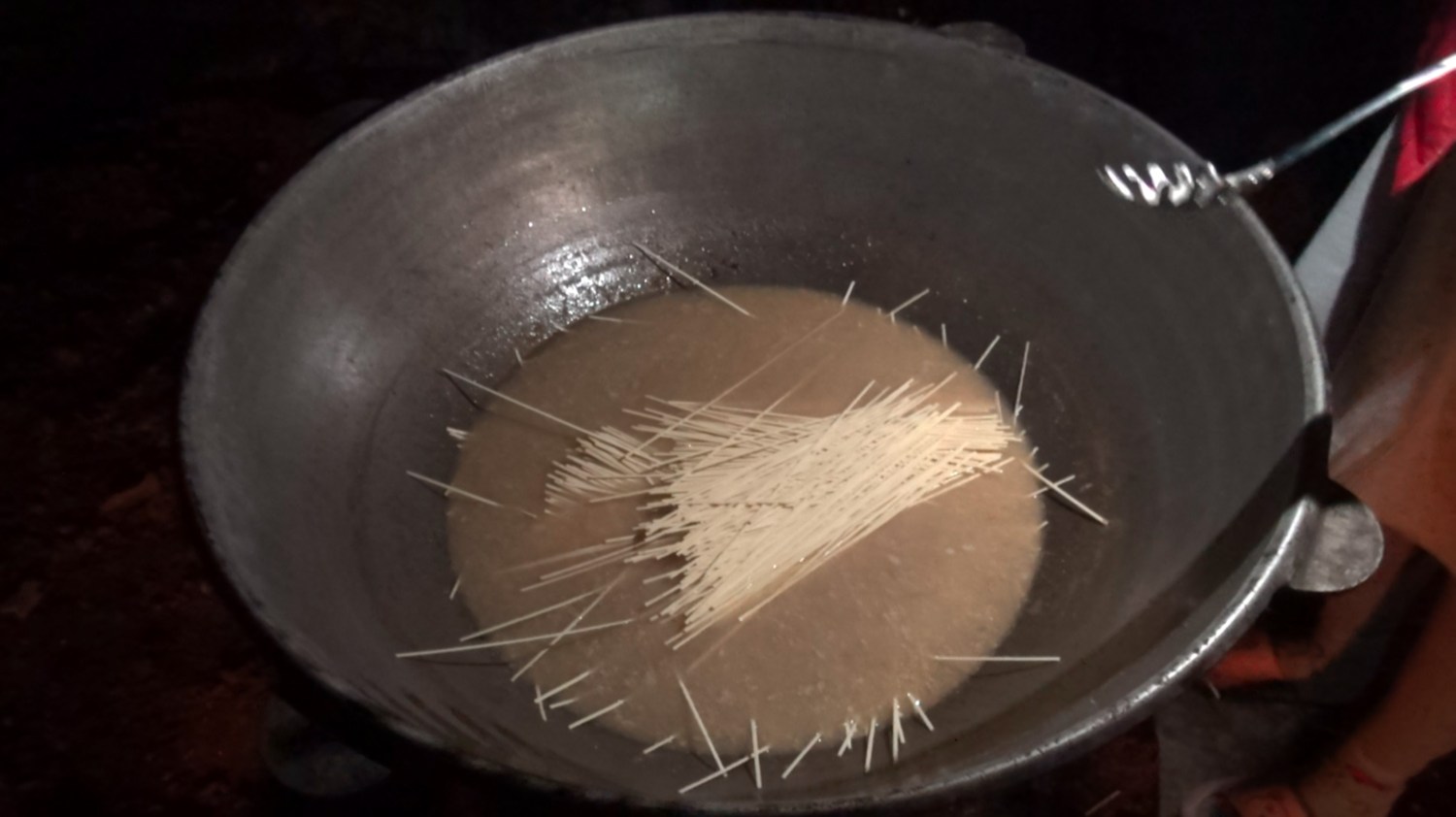
The Approach to Eating Et and Naryn with Hands
Kazakhstan and Kyrgyzstan are predominantly Islamic countries, but I did not encounter the view that eating et or Naryn by hand is due to religious reasons. Instead, it is primarily seen as a tradition from the nomadic way of life, and there were no taboos about using the left hand or similar practices.
Hand-eating may occur directly from one large plate or from smaller individual plates. There are no finger bowls provided on the table, and when it is necessary to wash hands, people go to the washroom. Although people eat from a shared plate, in modern times, it is common for some people to use forks while others eat with their hands in many households or situations. Those who use forks tend to believe it is more refined, a trend that is particularly noticeable among younger generations.
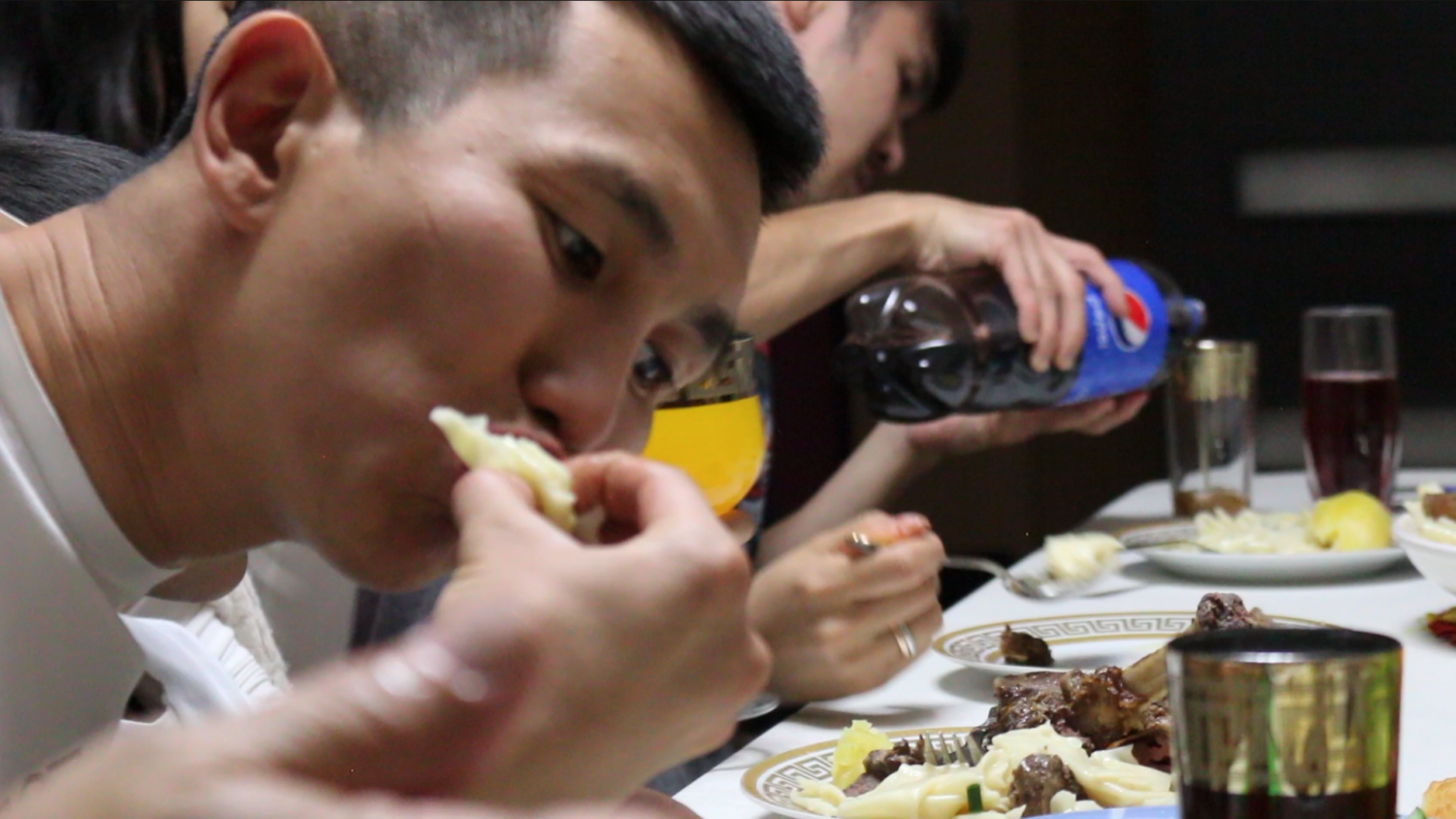
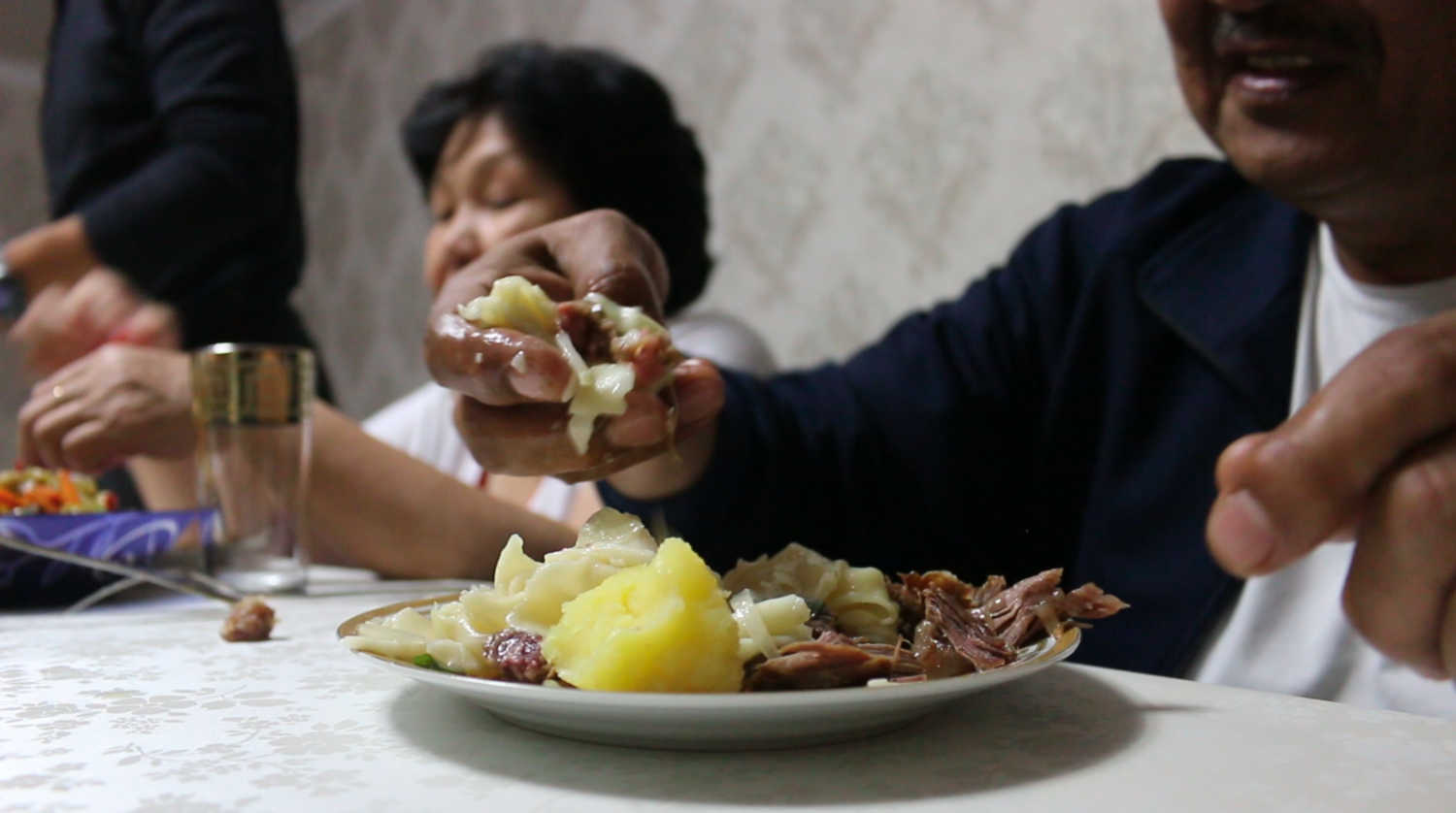
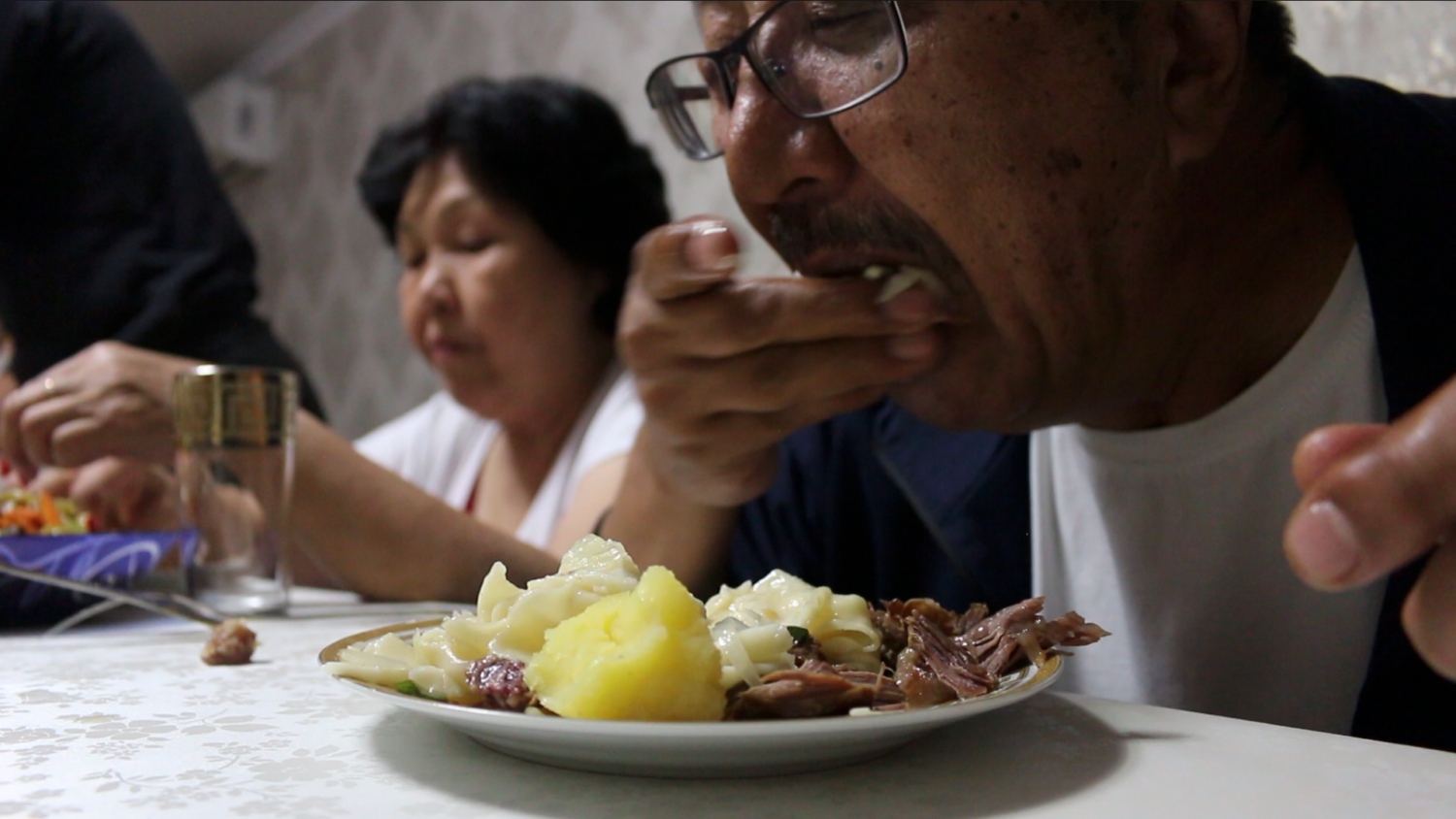
Modern dining tables are mostly equipped with chairs, and it is rare to see people eating on the floor in urban areas. Therefore, et and Naryn are now typically eaten by hand while sitting at a table. However, as an exception, during a memorial event for the first anniversary of a deceased person’s passing in a rural village, people sat on the floor in a circle, and Naryn was served in that setting.
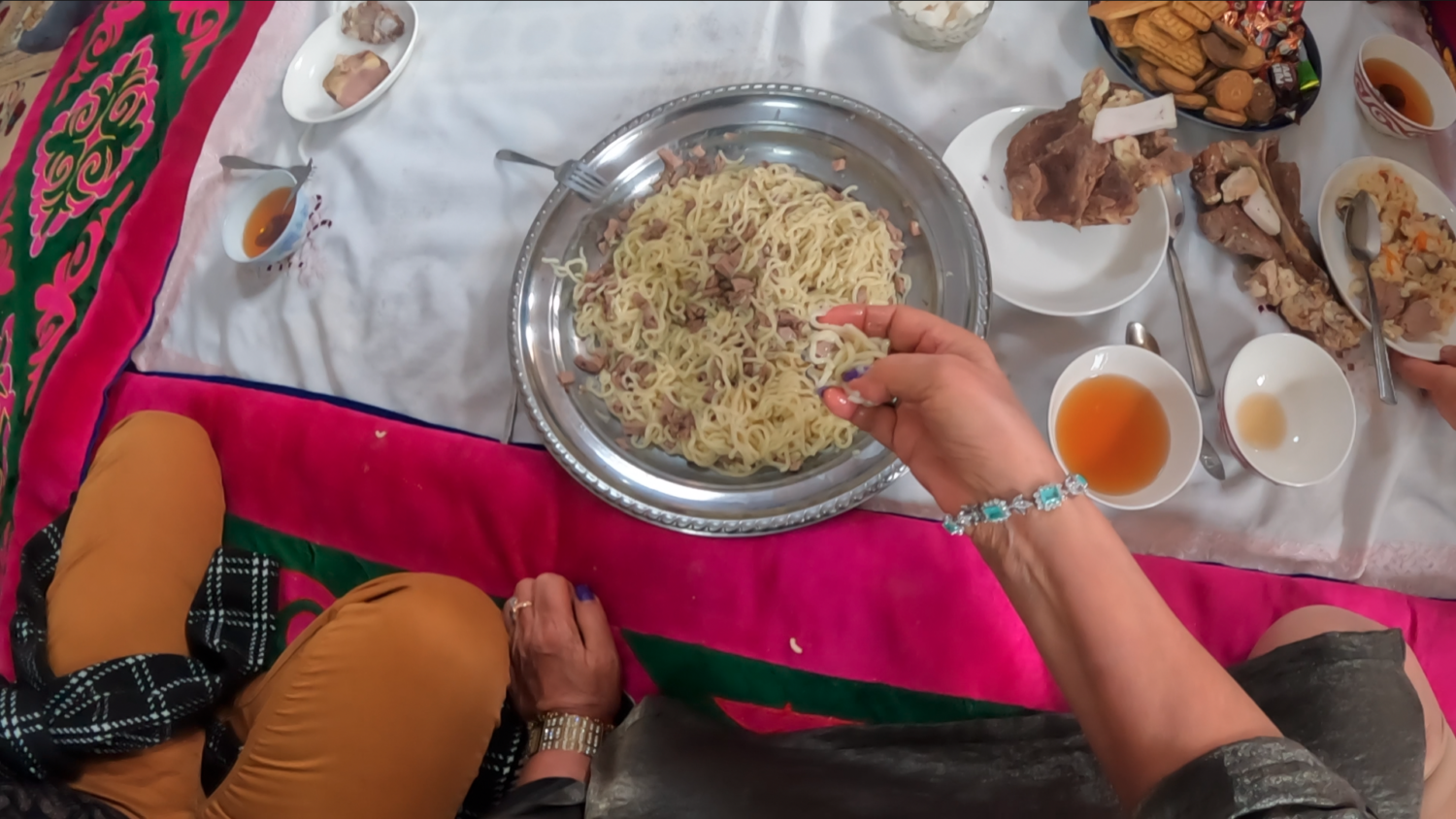
Today, there are no households that practice full-time nomadic life with a yurta (similar to a Mongolian ger), though some families still use yurtas seasonally for tending to livestock such as sheep. During the research period, I was unable to capture scenes of eating et or Naryn in a yurta setting.
The older generation, who steadfastly maintain the tradition of eating by hand, often believe it is related to the unity of family and community, reflecting a spiritual connection. For many, it is also a way of showing respect for their ancestors, and they feel it is a practice that should be preserved. Additionally, there is a simple and subjective belief that food tastes better when eaten by hand.
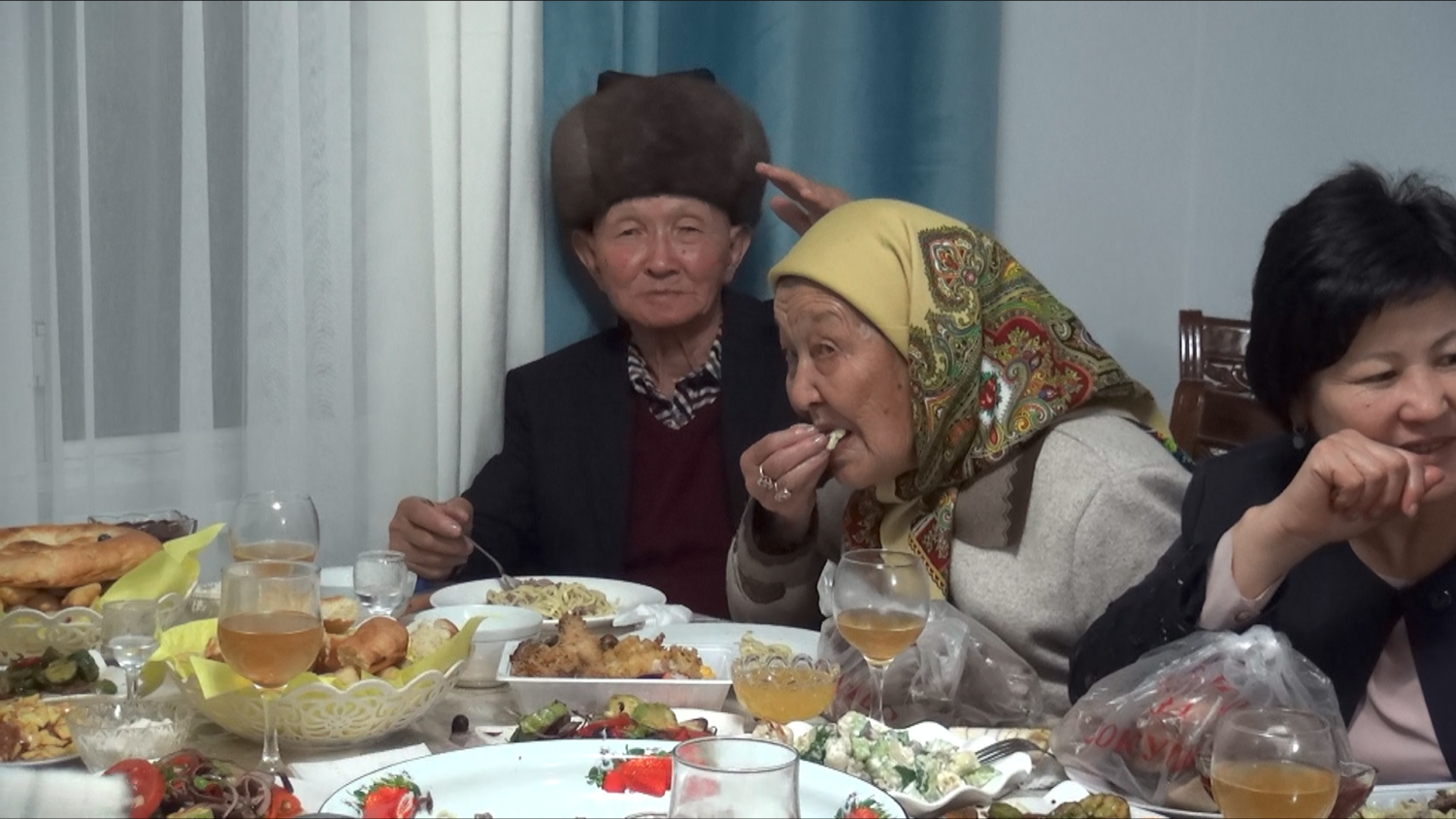
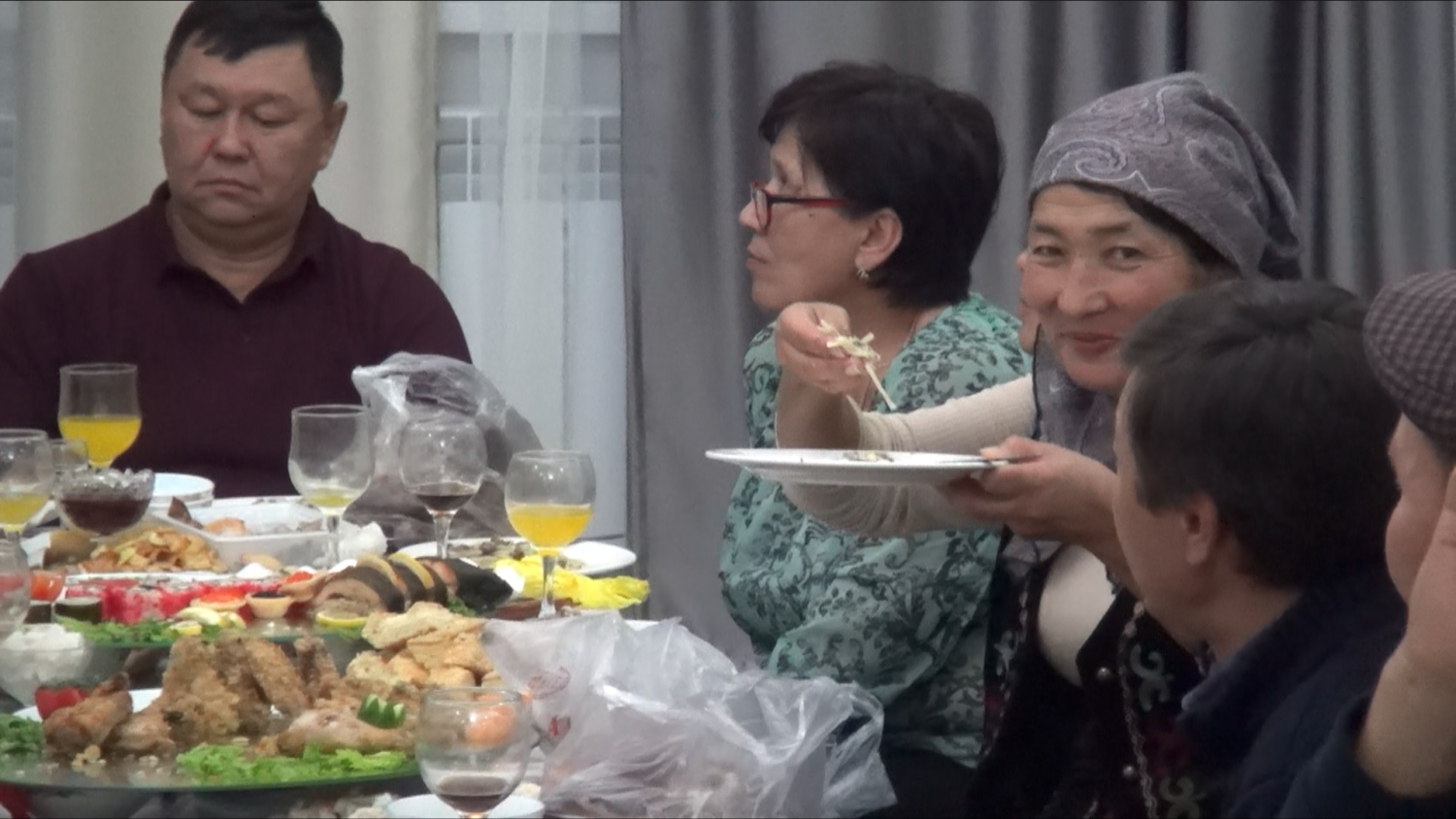
As an aside, I found that after eating et by hand, the severe hangnails on their fingers had healed by the next day. Et uses horse meat, and it contains a rich amount of horse fat, which coats the hands and fingers when eaten by hand, making them greasy. Horse fat is believed to have highly protective effects on the skin, and in Japan, there are even skincare products made from horse oil. It is likely that during the nomadic era, in the harsh desert environment, where hands would often become chapped from tasks like tending livestock, eating et with one’s hands could have served as a folk remedy to protect the hands and fingers.
Furthermore, in the historical text “ ҚАЗАҚТЫҢ ЭТНОГРАФИЯЛЫҚ КАТЕГОРИЯЛАР, ҰҒЫМДАР МЕН АТАУЛАРЫНЫҢ ДƏСТҮРЛI ЖҮЙЕСI, 2-том ” (p. 222), it was mentioned that during the winter, when someone caught a cold, they were treated by drinking a large amount of horse meat soup. Et, therefore, may have served as a form of internal folk medicine as well.
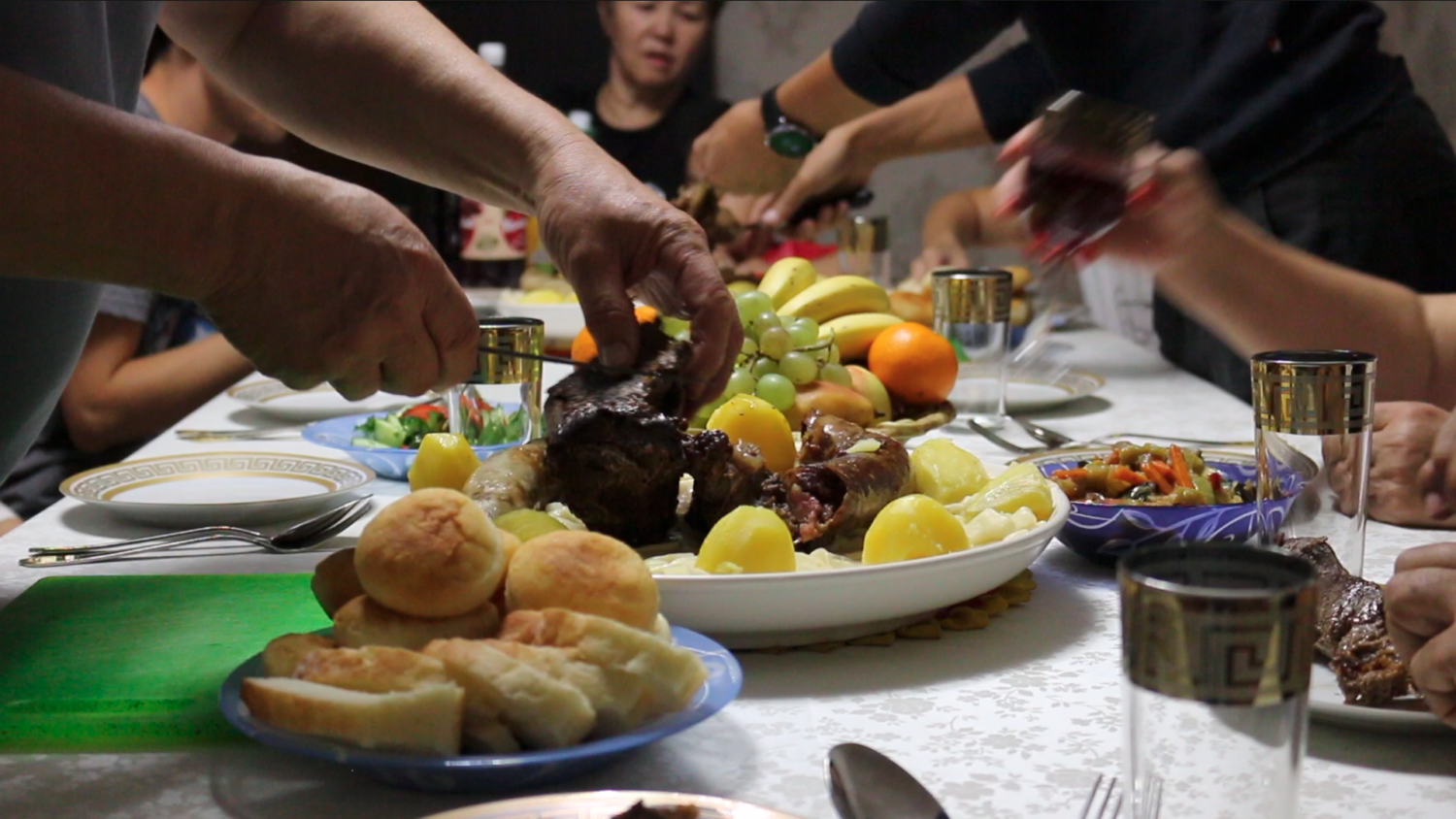
Reference videos on hand-eating Naryn
『The first teacher (Первый учитель)』(Andrey Koncharovskiy, 15 August 1966, Russia)
https://rezka.ag/films/drama/45035-pervyy-uchitel-1965.html
You can view the relevant scene between 37 and 39 minutes in the film, where hand-eating a dish with string-like noodles and meat is shown.
The artwork created by the author through the research of et
- Aki Yahata’s website Don’t Call It Beshbarmak, 2022, Web page
- Kyoto city Kyocera Museum Don’t Call It Beshbarmak, 2022, Online catalogue
Profile

Aki Yahata
A contemporary artist and the curator of the "Hand-Eating" website.
Born 1985 in Tokyo, raised in Hokkaido. Completed a master’s degree in the Intermedia Art Course, Tokyo University of the Arts. After leaving the doctoral course of the same department, graduated from Shiga University of Medical Science.
YAHATA Aki is a contemporary artist who creates cross-disciplinary art works based on field research and interviews. Her main media are video + installation. As part of her pursuit of the concept of ‘(geographical/social/physical/mental) frontiers’, she has recently focused on ‘eating-with-hands’ and ‘road movies’. She also explores diverse developments in video, such as attempts to improvise road movies using VJ techniques. Since 2022, she has founded, presided over and edited the website ‘TESHOKU’ web, an online archive of eating-with-hands cultures around the world.
She speculates and explores ways to extend the life force of human beings through art.
In 2023, she presented an solo exhibition titled "Don't Call It Beshbarmak //2022" based on her research on Beshbarmak at the Kyoto City Kyocera Museum of Art.
https://yahataaki.asia/





Leave a
Comment